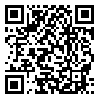BibTeX | RIS | EndNote | Medlars | ProCite | Reference Manager | RefWorks
Send citation to:
URL: http://jha.iums.ac.ir/article-1-182-en.html
Introduction: Emerging and developing of information technology has impact on library functions, especially on materials organization, so this survey carried out to study the use of information technology in cataloging departments at central libraries of medical universities and faculties in Iran.
Methods: In this descriptive study research population were managers of cataloging departments in central libraries of 44 medical universities and faculties. We used questionnaire for data collecting, after its validity and reliability confirmation. From 44 distributed questionnaires 41 were completed and returned. Among research population 41 libraries replied those questionnaires and the reminder of them omitted because they didn't answered the questionnaires. The collected data analyzed by SPSS software and the results presented by descriptive statistics in tables and graphs.
Results: Existed hardwares in these libraries included: 496 computers, 108 printers, 29 scanners, 27 barcode reader scanners, 79 CD writers that were out of dates and different. Existed soft wares had the same situation too. From these 44 soft wares, 34 copies (83%) were Parsazarakhsh and 7 next copies were Nosa, Kavosh and Mava. Among the catalogers with diploma to Master of Science degree in different major including medical library and information science, 22 catalogers were educated on cataloging process from internet. They paid attention to analytical cataloging greatly and to authority control slightly. In aspect of non-book materials thesis (80%) and related websites (2.5%) had most and least frequencies. The catalogers used different methods such as original, CIP and copy cataloging in cataloging process. Only 29 libraries (70.7%) used all methods. In aspect of using different parts of soft wares, cataloging and acquisition had most and least frequencies. Only 32 libraries prepared backup files and 31 libraries had network for using those soft wares. In process of bibliographic electronic searching, web-based OPAC of national library of medicine and Bibliofile had most and least frequencies too.
Conclusion: because of the absence special program in using of information technology, organization development of different library materials, unbalanced situation of human population, hard ware and soft ware equipments, have not direct connection with internet , its slowness and connection discontinuation and unfamiliarity with cataloging electronic tools, confronted the surveyed libraries with difficulties.
Received: 2008/11/5 | Published: 2008/07/15
| Rights and permissions | |
 |
This work is licensed under a Creative Commons Attribution-NonCommercial 4.0 International License. |





